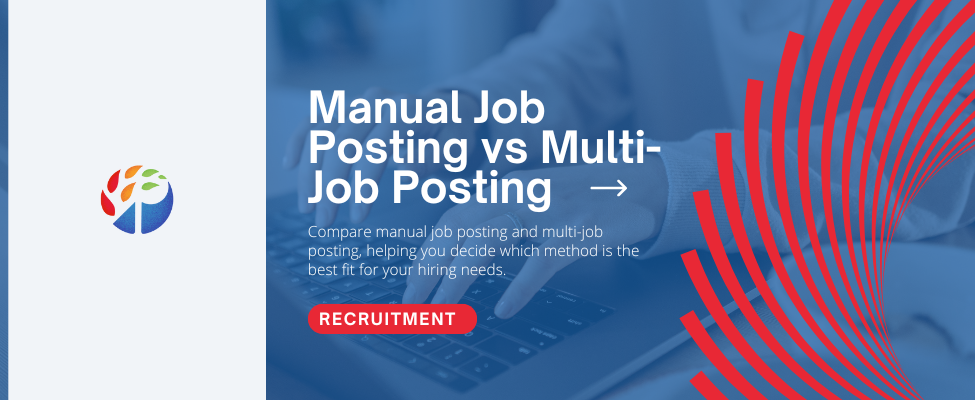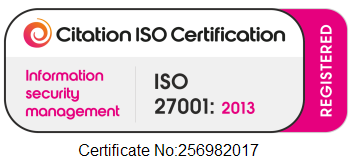Manual Job Posting vs Multi-Job Posting
Hiring the right talent can make or break a company, which makes job posting a crucial part of the recruitment process. However, when it comes to posting job ads, companies face two main options: manual job posting and multi-job posting. Each approach has its advantages and disadvantages, and choosing the right method can significantly impact the speed, reach, and quality of your recruitment.
In this blog, we’ll compare manual job posting and multi-job posting, helping you decide which method is the best fit for your hiring needs.
What is Manual Job Posting?
Manual job posting involves individually uploading job ads to various job boards, career websites, and social media platforms. This approach requires the recruiter or HR professional to create separate accounts on each platform, format the job description according to the platform’s guidelines, and manage each post independently.
Pros of Manual Job Posting
- Control Over the Process
With manual job posting, you have complete control over every aspect of the job ad on each platform. You can customise the content, select specific job boards, and tailor your approach based on the platform’s audience. - Customisation for Platform Specificity
Different job boards attract different types of candidates. With manual posting, you can tailor job descriptions for each platform to match the preferences and characteristics of its user base, increasing your chances of attracting the right talent. - Personalised Brand Building
Since you’re handling each job ad individually, it’s easier to align the job postings with your employer brand. Whether it’s tweaking the tone of the job description or highlighting company values, manual posting allows for personalised brand promotion.
Cons of Manual Job Posting
- Time-Consuming
Posting jobs manually across multiple platforms can be incredibly time-intensive, especially when you’re managing several open positions. Formatting job descriptions, uploading logos, and adhering to different platforms’ guidelines can take up valuable hours. - Limited Reach
Manually posting job ads means you’re relying on a handful of platforms unless you’re willing to spend extra time expanding your reach. This could lead to missed opportunities to reach top talent that might be more active on platforms you haven’t considered. - Inconsistent Tracking
With each platform working independently, it’s harder to track performance consistently. You’ll need to check each account for applications, stats, and engagement, which can lead to inefficiencies and missed deadlines.
What is Multi-Job Posting?
Multi-job posting, also known as bulk or automated job posting, involves using a tool or software to post job ads across multiple platforms simultaneously. With a single upload, your job ad is distributed to numerous job boards, websites, and social networks.
Pros of Multi-Job Posting
- Saves Time and Effort
One of the most significant advantages of multi-job posting is the automation of the process. Instead of manually posting to each platform, recruiters can create a single job listing and publish it across multiple job boards in a few clicks. This dramatically reduces the time spent on administrative tasks. - Wider Reach
Multi-job posting tools typically have partnerships with dozens of job boards, including general and niche platforms. This ensures your job listing reaches a broader audience, increasing the chances of attracting top talent from different sectors and regions. - Centralised Tracking and Reporting
With multi-job posting platforms, all your job listings are managed from a single dashboard. You can track performance metrics like views, clicks, and applications in one place, making it easier to refine your job descriptions or target different platforms based on the data. - Efficient Use of Resources
By leveraging the power of automation, companies can save both time and money. Multi-job posting software reduces the need for a large recruiting team and allows HR professionals to focus on higher-level tasks like interviewing and candidate assessment.
Cons of Multi-Job Posting
- Less Control Over Individual Listings
While automation saves time, it can come at the cost of customisation. Most multi-job posting tools offer standardised job descriptions that are sent to multiple platforms. This reduces your ability to tailor listings to specific platforms, which can affect engagement in niche job boards. - Risk of Duplicate Applications
Since job ads are posted on multiple platforms, there is a higher chance of receiving duplicate applications from candidates who frequent several job boards. This can lead to confusion and extra administrative work during the screening process. - May Attract Quantity Over Quality
Multi-job posting tools often focus on casting a wide net, which may result in a high volume of applicants. However, this doesn’t always guarantee quality. Filtering through a large number of irrelevant or unqualified applicants can add to your workload.
Manual Job Posting vs Multi-Job Posting: A Direct Comparison
| Criteria | Manual Job Posting | Multi-Job Posting |
| Time Efficiency | Time-consuming, especially for multiple job boards | Highly efficient; posts to multiple platforms in one go |
| Cost | Can be cheaper if using free platforms | Typically involves subscription fees but can provide better ROI |
| Customisation | High level of control and customisation per platform | Limited customisation across platforms |
| Reach | Limited unless done across multiple platforms manually | Broad reach; distributes to multiple job boards simultaneously |
| Tracking & Analytics | Requires manual tracking on each platform | Centralised tracking and reporting in one dashboard |
| Candidate Quality | Higher quality but fewer applicants | Higher quantity but may require more filtering |
| Control Over Listings | Full control over content and job board choice | Less control; standardised posting across platforms |
Which Option is Best for You?
The choice between manual and multi-job posting depends largely on your hiring needs, resources, and priorities.
- Manual Job Posting is ideal for companies that want precise control over their job ads and have a smaller number of vacancies to fill. It’s also suitable for businesses looking to post on specific, niche job boards that may not be available on multi-posting platforms.
- Multi-Job Posting is the best option for companies with high-volume hiring needs or those looking to reach a broad audience quickly. It’s also a smart choice if you want to streamline your recruitment process and use data to optimise your strategy.
Both manual and multi-job posting methods offer distinct advantages and challenges. For companies with limited job openings and a need for customised postings, manual job posting may be more suitable. However, for businesses seeking to maximise efficiency, reach a large talent pool, and leverage data-driven insights, multi-job posting is likely the better solution.
Choosing the right method depends on your specific hiring goals and resources. By understanding the pros and cons of each approach, you can optimise your recruitment process, save time, and attract the best candidates for your open positions.




Comments are closed